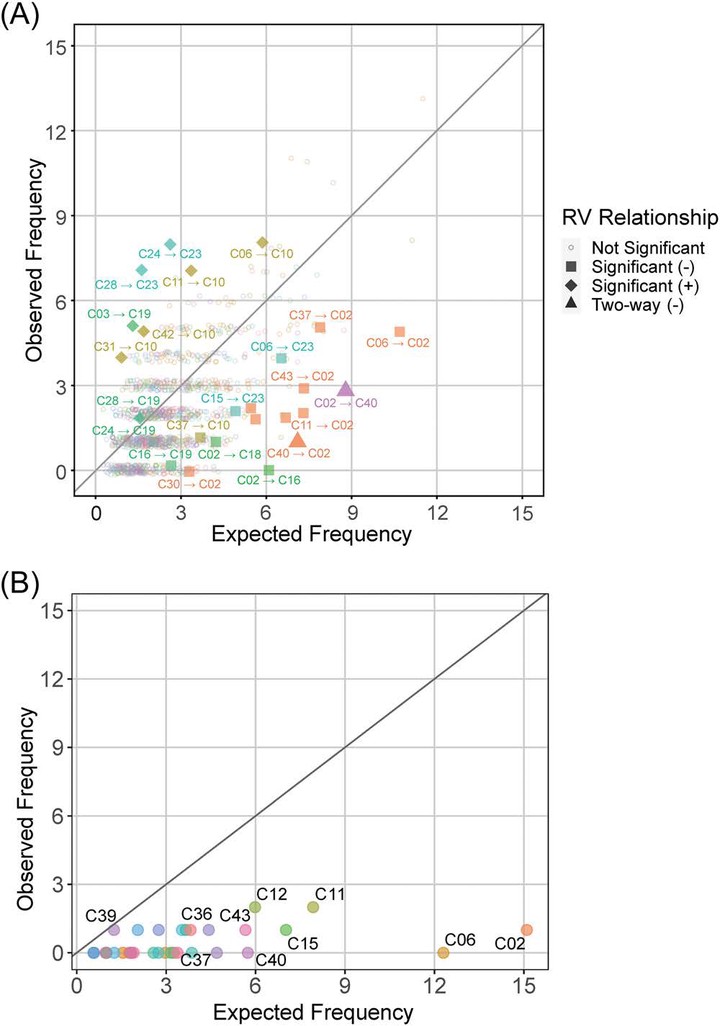Rhinoviruses A and C Elicit Long-Lasting Antibody Responses with Limited Cross-Neutralization

Abstract
Background: Rhinoviruses (RVs) can cause severe wheezing illnesses in young children and patients with asthma. Vaccine development has been hampered by the multitude of RV types with little information about cross-neutralization. We previously showed that neutralizing antibody (nAb) responses to RV-C are detected 2-3-fold more often than those to RV-A throughout childhood. Based on Ttheose findings, we aimed to test the hypothesizeds suggest that RV-C infections are may be more likely to induce either cross-neutralizing or longer-lasting antibody responses compared with RV-A infections. Methods: We pooled RV diagnostic data from multiple studies of children with respiratory illnesses and compared the expected vs. observed frequencies of sequential infections with RV-A or RV-C types using log-linear regression models. We tested longitudinally collected plasma samples from children to compare the duration of RV-A vs. RV-C nAb responses. Results: Our models identified limited reciprocal cross-neutralizing relationships for RV-A (A12-A75, A12-A78, A20-A78, and A75-A78) and only one for RV-C (C2-C40). Serologic analysis using reference mouse sera and banked human plasma samples confirmed that C40 infections induced nAb responses with modest heterotypic activity against RV-C2. Mixed-effects regression modeling of longitudinal human plasma samples collected from ages 2-18 years demonstrated that RV-A and RV-C illnesses induced nAb responses of similar duration. Conclusions: These results indicate that both RV-A and RV-C nAb responses have only modest cross-reactivity that is limited to genetically similar types. Contrary to our initial hypothesis, RV-C species may include even fewer cross-neutralizing types than RV-A, whereas the duration of nAb responses during childhood is similar between the two species. The modest heterotypic responses suggest that RV vaccines must have a broad representation of prevalent types.